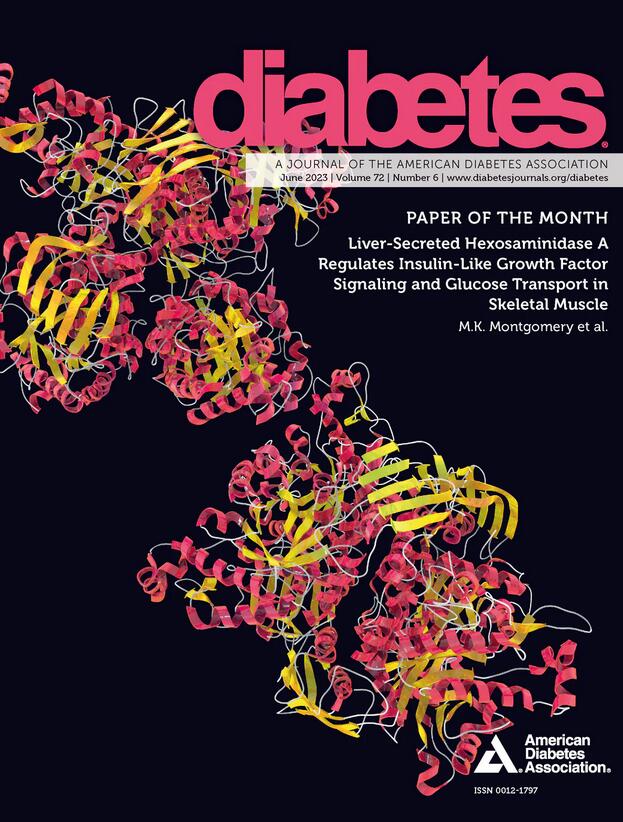Extracellular Mitochondria Exacerbate Retinal Pigment Epithelium Degeneration in Diabetic Retinopathy
IF 6.2
1区 医学
Q1 ENDOCRINOLOGY & METABOLISM
引用次数: 0
Abstract
Advances in fundus imaging are revealing disruptions in the neurovascular unit in diabetic retinopathy (DR). In the era of anti-VEGF treatment, a thorough characterization of neurodegeneration is imperative until DR patients are sufficiently cured. Here we demonstrate that extracellular mitochondria exacerbate retinal pigment epithelium (RPE) degeneration and inflammation in DR. Extracellular mitochondria increased in the vitreous of DR patients and were associated with visual impairment but not with proliferative diabetic retinopathy or diabetic macular edema. Animal experiments demonstrated detrimental effects of extracellular mitochondria on RPE and photoreceptors. Lysosomal cell death induced by extracellular mitochondria in RPE cells required mitochondrial DNA but not its pattern recognition receptors. Furthermore, biochemical screening identified candidates for DNA receptors. Among them, DNA-dependent protein kinase was necessary for extracellular mitochondria-induced cell death in both in vitro and in vivo experiments. Extracellular mitochondria further induced IL-1β and TNF-α expression in RPE cells in a Toll-like receptor 9 dependent manner. RNA sequencing suggested that extracellular mitochondria exacerbate inflammation by promoting the proliferation and migration of macrophages, at least in part. In summary, extracellular mitochondria are designated as a novel exacerbating factor of RPE degeneration in DR.细胞外线粒体加剧糖尿病视网膜病变视网膜色素上皮变性
眼底影像学的进步揭示了糖尿病视网膜病变(DR)中神经血管单元的破坏。在抗vegf治疗的时代,在DR患者得到充分治愈之前,对神经变性进行彻底的表征是必要的。在这里,我们证明细胞外线粒体加剧了DR视网膜色素上皮(RPE)变性和炎症。DR患者玻璃体中的细胞外线粒体增加,与视力障碍有关,但与增殖性糖尿病视网膜病变或糖尿病黄斑水肿无关。动物实验证实了细胞外线粒体对RPE和光感受器的有害影响。RPE细胞胞外线粒体诱导的溶酶体细胞死亡需要线粒体DNA,而不需要其模式识别受体。此外,生化筛选确定了DNA受体的候选物。其中,dna依赖性蛋白激酶在细胞外线粒体诱导的细胞死亡中都是必需的。细胞外线粒体进一步以toll样受体9依赖的方式诱导RPE细胞中IL-1β和TNF-α的表达。RNA测序表明,细胞外线粒体至少在一定程度上通过促进巨噬细胞的增殖和迁移而加剧炎症。总之,细胞外线粒体被认为是DR中RPE变性的一个新的加剧因素。
本文章由计算机程序翻译,如有差异,请以英文原文为准。
求助全文
约1分钟内获得全文
求助全文
来源期刊

Diabetes
医学-内分泌学与代谢
CiteScore
12.50
自引率
2.60%
发文量
1968
审稿时长
1 months
期刊介绍:
Diabetes is a scientific journal that publishes original research exploring the physiological and pathophysiological aspects of diabetes mellitus. We encourage submissions of manuscripts pertaining to laboratory, animal, or human research, covering a wide range of topics. Our primary focus is on investigative reports investigating various aspects such as the development and progression of diabetes, along with its associated complications. We also welcome studies delving into normal and pathological pancreatic islet function and intermediary metabolism, as well as exploring the mechanisms of drug and hormone action from a pharmacological perspective. Additionally, we encourage submissions that delve into the biochemical and molecular aspects of both normal and abnormal biological processes.
However, it is important to note that we do not publish studies relating to diabetes education or the application of accepted therapeutic and diagnostic approaches to patients with diabetes mellitus. Our aim is to provide a platform for research that contributes to advancing our understanding of the underlying mechanisms and processes of diabetes.
 求助内容:
求助内容: 应助结果提醒方式:
应助结果提醒方式:


